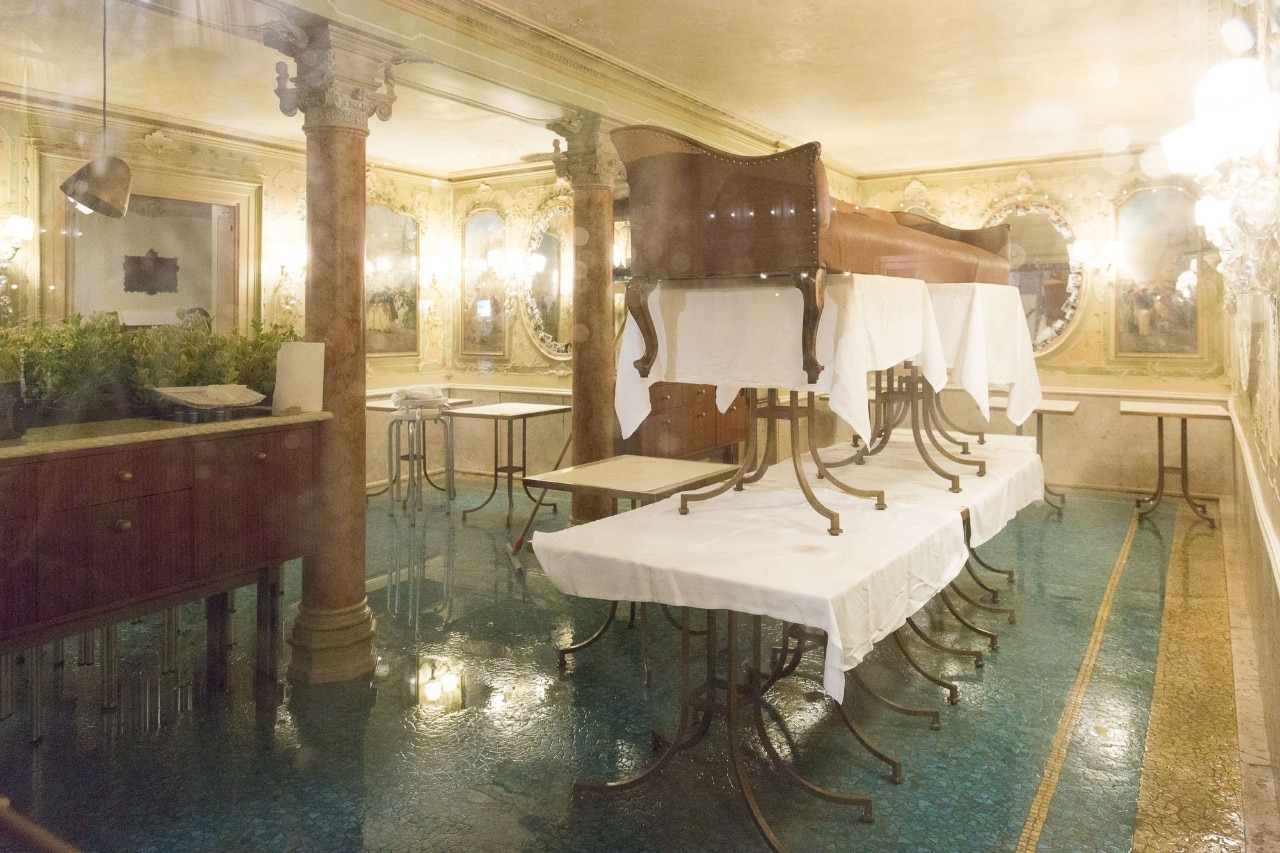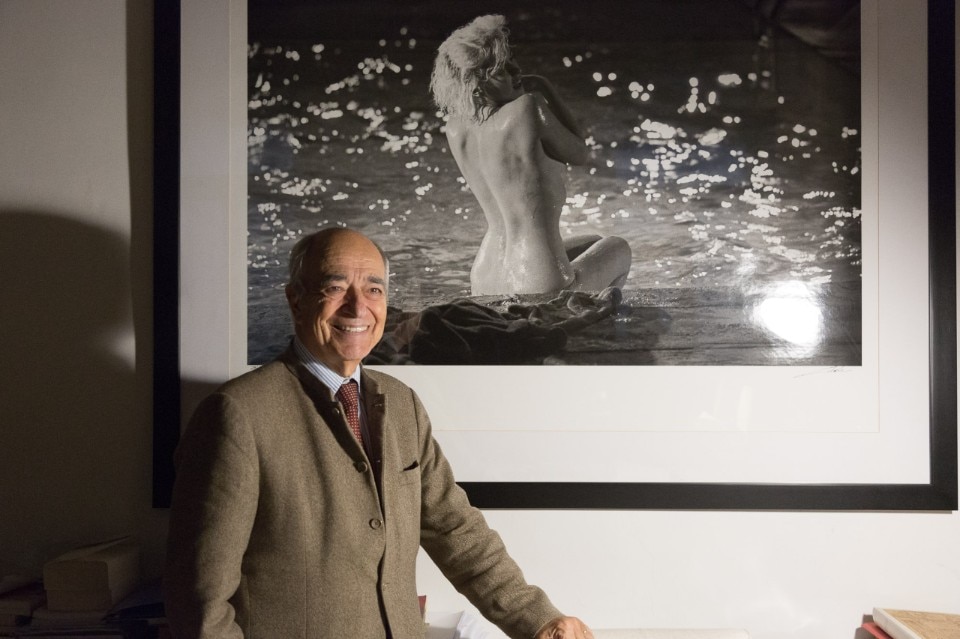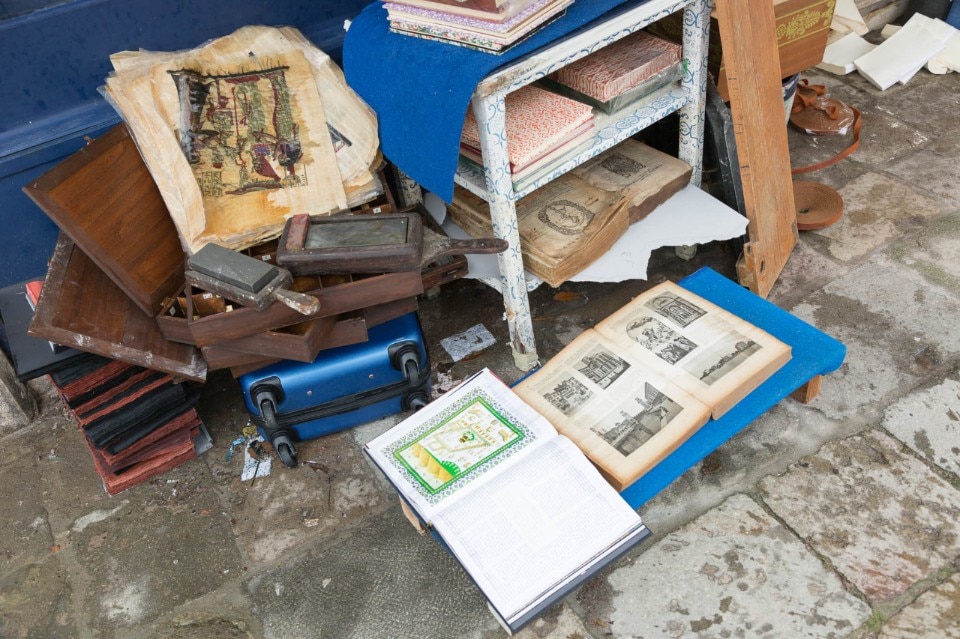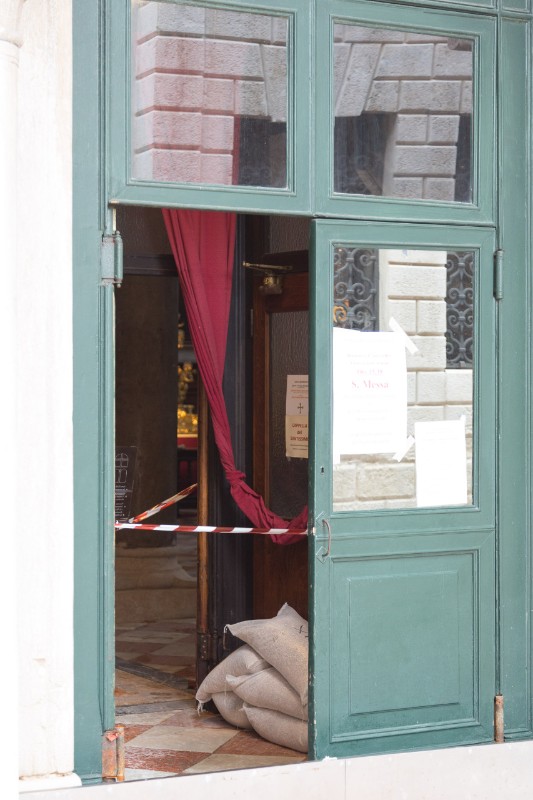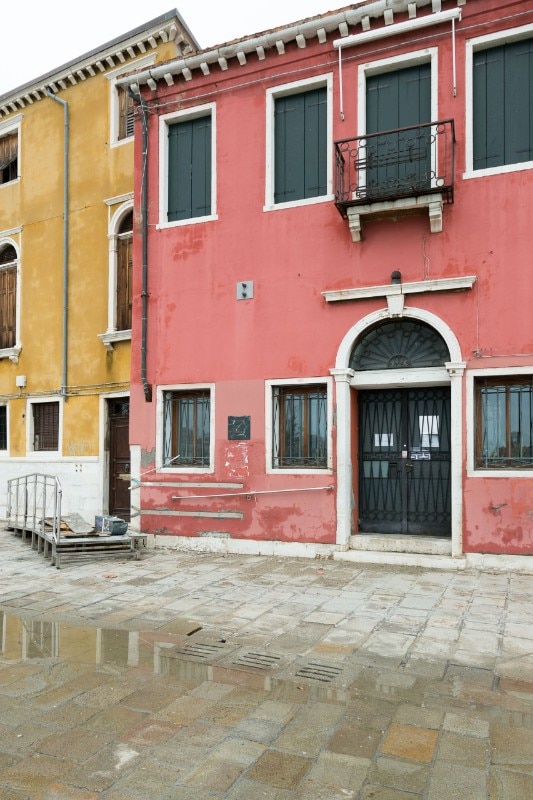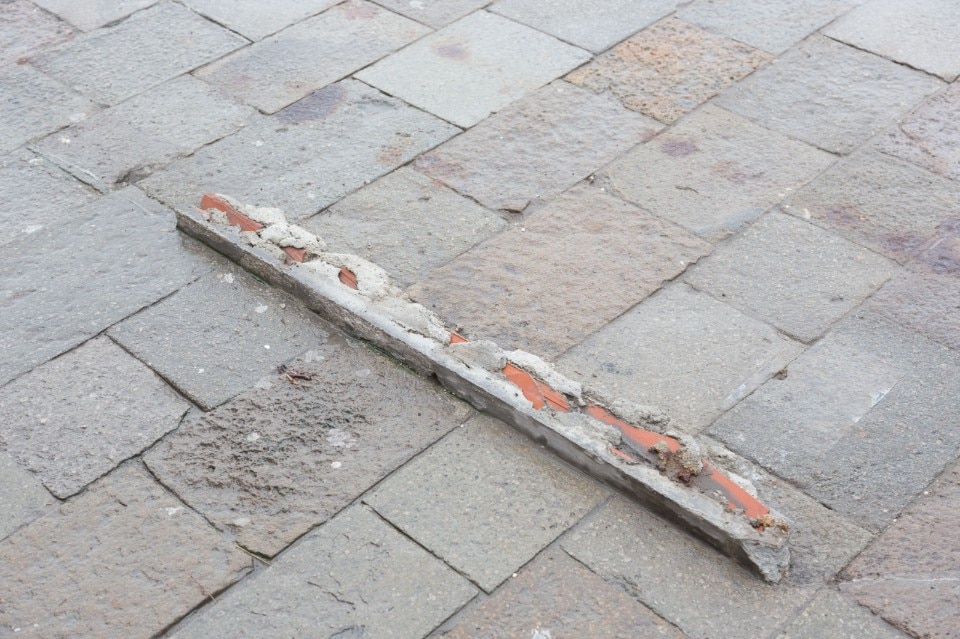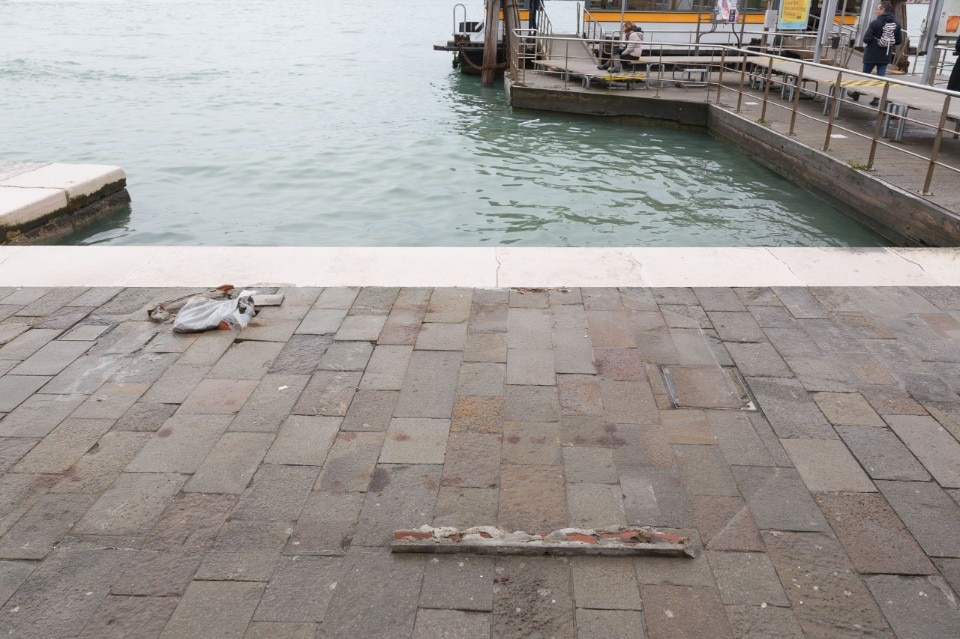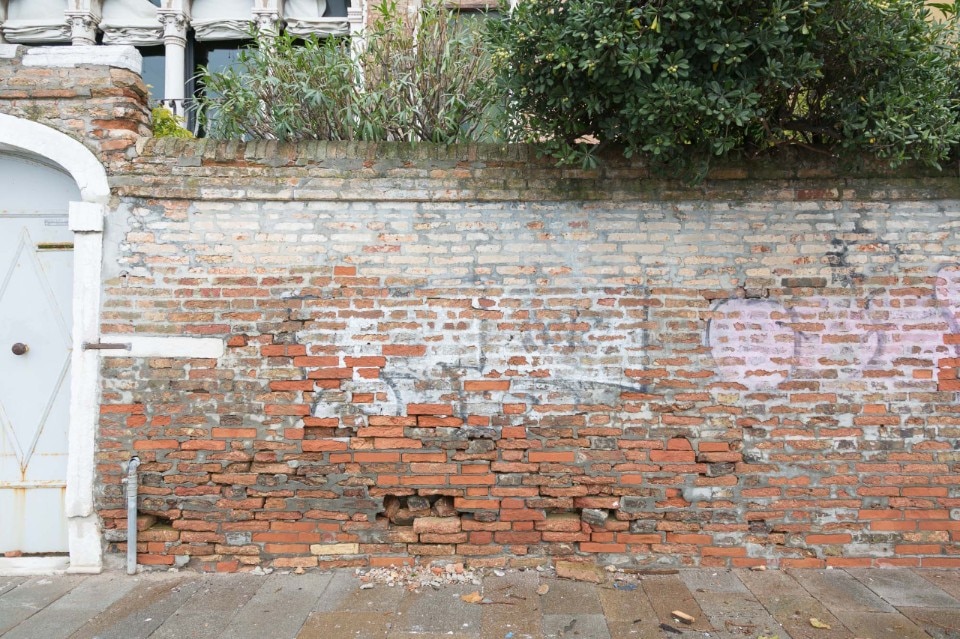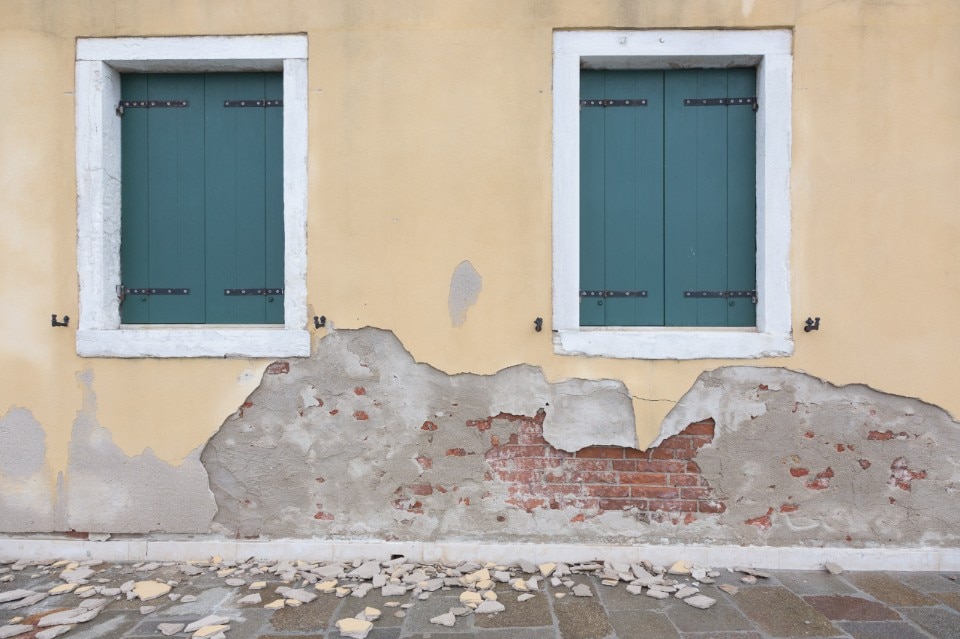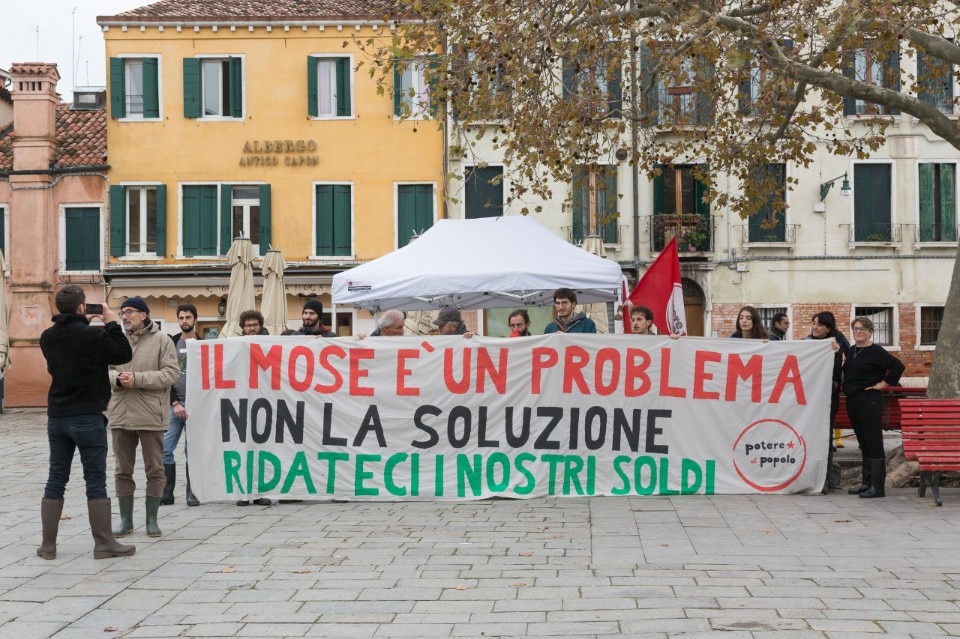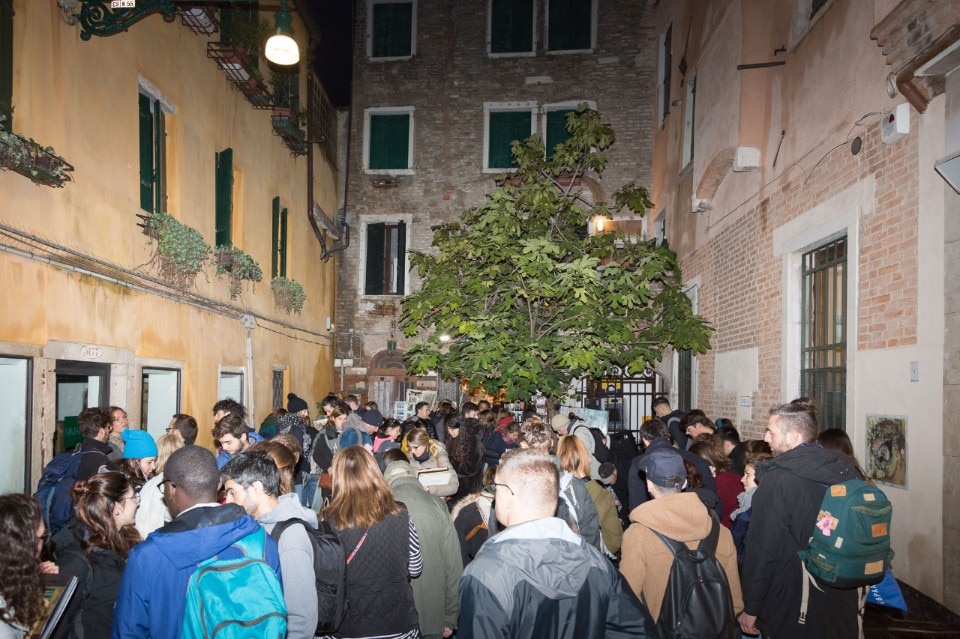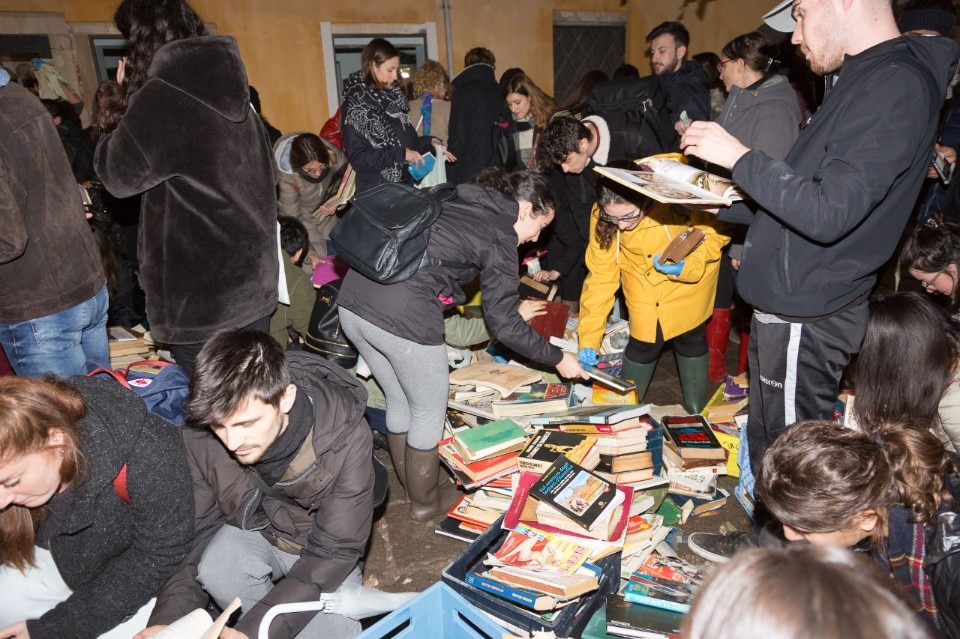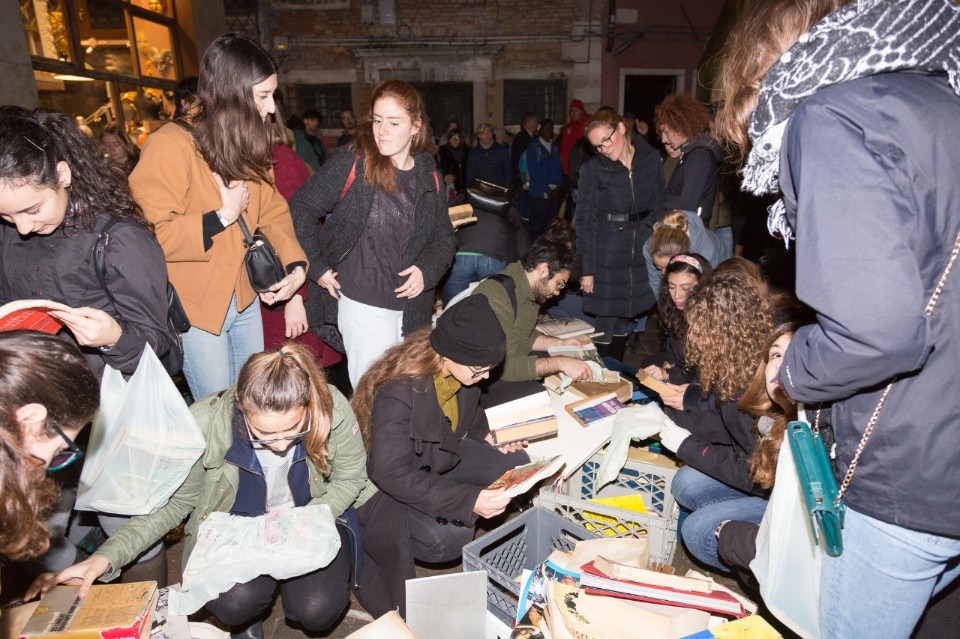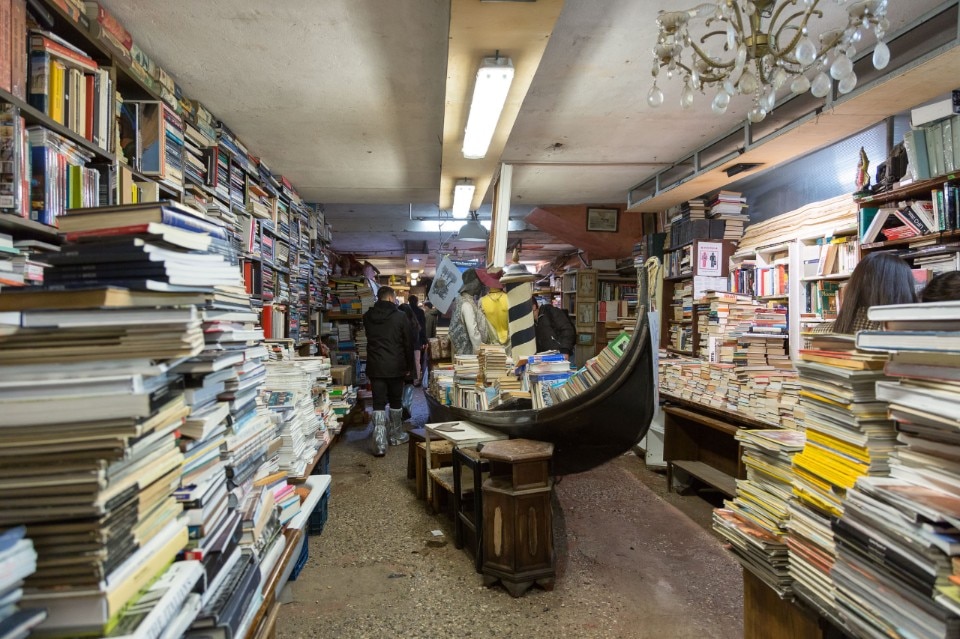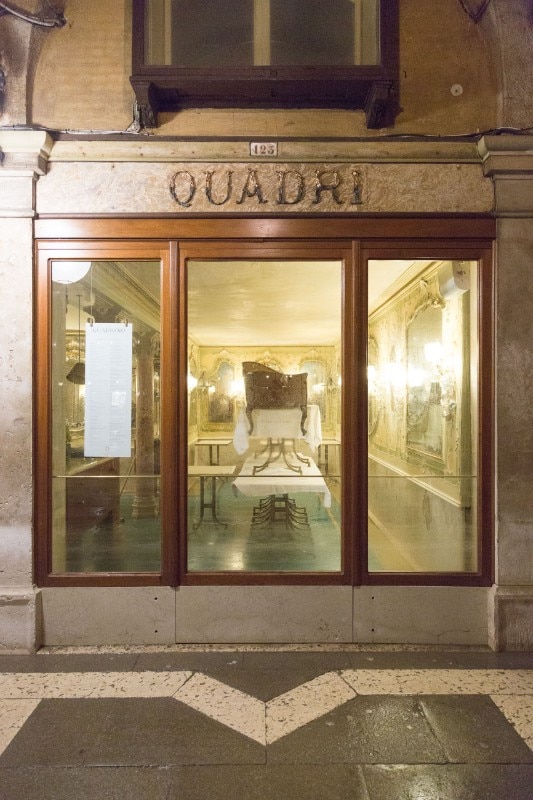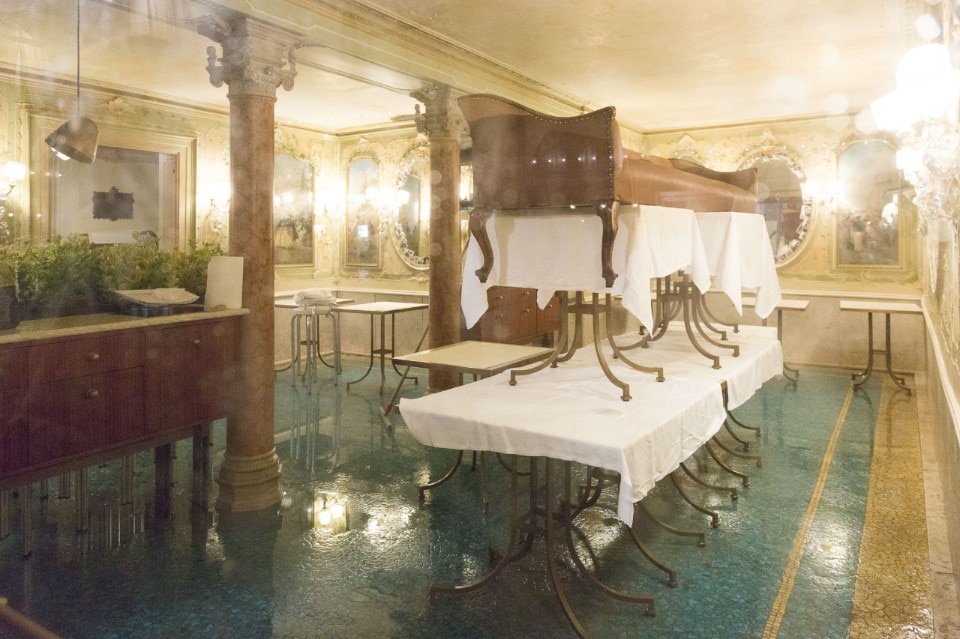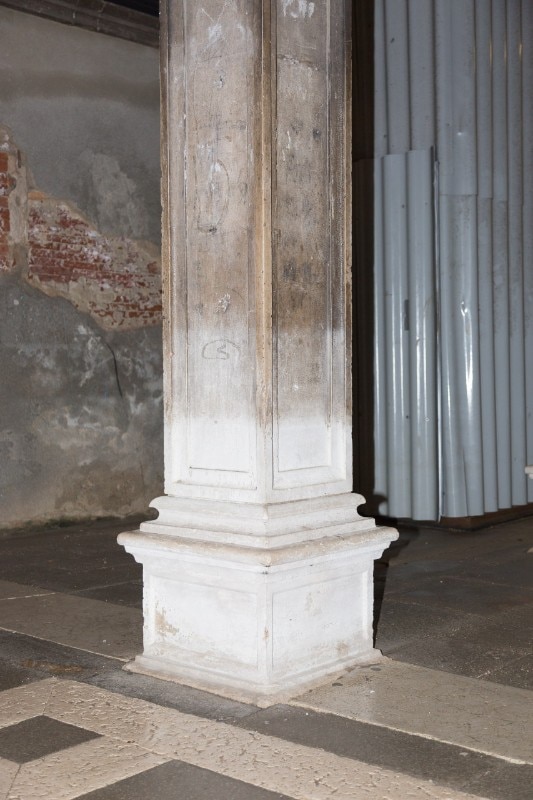A year ago high water drowned Venice under the second highest swell in its history, with 187 centimeters of water and gusts of wind over 100 Km/h. The tragic event that the Venetians experienced as a tsunami only partially foretold, brought back the spotlight on a story dear to all humanity, namely the disappearance of this wonderful city at the hands of nature and climate change on the one hand, and the progressive lack of maintenance and “knowledge” on the other.
We propose an unreleased interview with architect Antonio Foscari made in the days following the event. The professor – who boasts in his curriculum an Order of Merit of the Italian Republic, the Légion d’Honneur de la République Francaise, the presidency of the Academy of Fine Arts in Venice, the vice-presidency of the Querini Stampalia Foundation and a place on the Board of Directors of the Louvre and the CISA Andrea Palladio – told us in his studio, a few steps from the Accademia bridge, the background of a place he knows like few others in the world: the Venice Lagoon.
From the times in which Leonardo Da Vinci himself refused to manage the Venetian water network, since it was too complex for him, to the long events of the MoSE project (an engineering water system that was finally tested this year where huge submersed mobile gates hold water from invading the Lagoon), coincided with the depopulation of the intelligentsia linked to the management of the water from which the Dutch took inspiration for the draining system in the Netherlands, Foscari compares the optimal management of the lagoon basins to the management of the Louvre: each section should have its own peculiarity.
Now many are mobilizing to regain this knowledge, such as Ocean Space in Venice, a project that brings together an impressive number of figures for a transdisciplinary comparison on the study of the seas and coastal areas, using the lagoon as a unique environmental case in Europe. Just think of the 140 bird species that nest here and the over 180 that winter here: the immobility of the lockdown has made it visible to all.
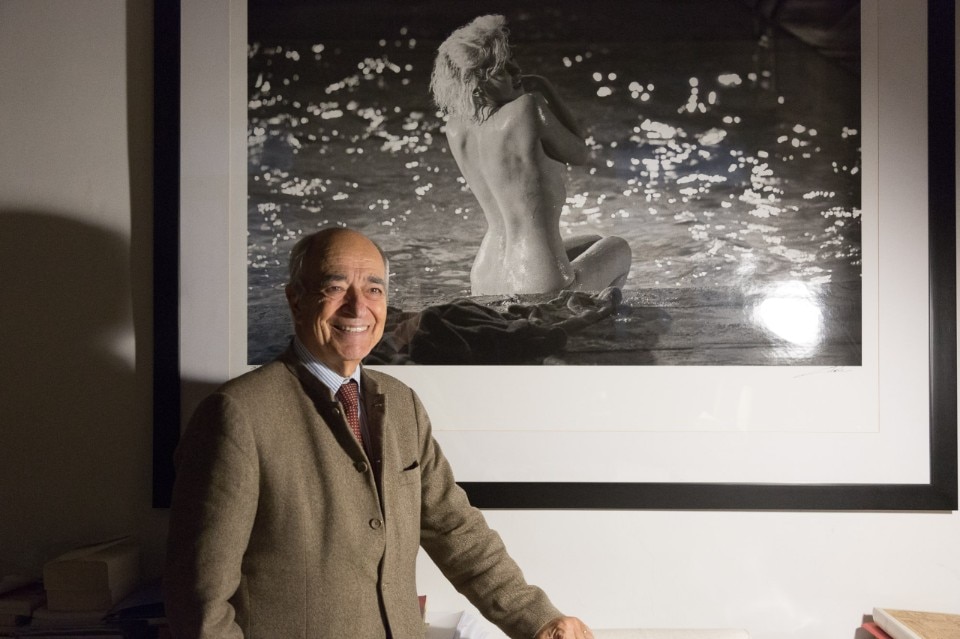
12 November 2019
How did I experience this tragic event? It doesn't matter, they are all individual episodes, all painful. At the Querini Stampalia Foundation we lost 300 linear meters of compact archive shelves that were on the ground floor. Here at the Music Conservatory, ancient music sheets went underwater, so in the end it is a collective tragedy, where everyone has their own personal version of fighting with water: on the ground floor of my house, water came in through the windows.
The MoSE
There is an underlying problem that needs to be addressed and after 50 years we are at the point of 50 years ago. That is to say that no future has been built in 50 years. The MoSE project is conceptually wrong, beyond the technical aspect, whether it works or not. Even if the MoSE had been in operation the first day they pronounced this name, it would not have prevented the destruction of the lagoon that is in place. The lagoon loses about 3-4 million m3 of material per year. It has lost in the last 30 years about 140 km2 of sandbanks, i.e. of shoreline: it is a total destruction. The MoSE, that is, a defense system – as the law says – of Venice and its lagoon, would have demanded that a barrier would be made, protect Venice and its lagoon. We take for granted that with this system the lagoon is out of combat, so the project is at least incomplete.
The Lagoon
The Lagoon is the largest humid space in Europe, the one of the most ancient anthropization, and it is a founding element of the history of Venice, because it is the space of freedom that Venice and the ancient Venetians managed to obtain between the Frankish Empire and the Byzantine Empire. This is because an army on horseback cannot enter the Lagoon and the Byzantine ships neither. A singular space of freedom was created in which a different civilization was built and Venice never had walls to defend it but always used the instrument of water as an element of its own identity, of its own functioning. In short, this lagoon is a masterpiece of humanity. Of course it is a little more conceptual than the beauty of the Doge's Palace, but it was an anthropic construction of extraordinary quality, in its naturalistic articulation and we are destroying it.
A lagoon system, not just a lagoon
The second very serious mistake is not to consider the fact that the lagoon of Venice should be more correctly called a lagoon system, formerly made by several lagoons, not communicating with each other. There were some watershed areas almost emerged, like lungs. Two lungs that work both: they are the same system but they are two distinct entities. These basins are now disappearing or are completely destroyed because the destruction of the morphology of the lagoon also involves this destruction. These three basins, let's call them three – in reality they would be more but let's say three because now three are the lagoon mouths we know – have distinct characteristics and vocations. The lagoon system of Venice, the one that is fed by the port mouth of San Nicolò, contains all the anthropic part of greater historical and artistic value: Venice, Murano, Burano, Giudecca, Torcello, the island of San Francesco del Deserto. It is all there. In the lagoon basin in the middle, there is not even a house, and is the outlet to the sea of the industrial area of Marghera. Finally, we have the lower basin which is that of Chioggia.
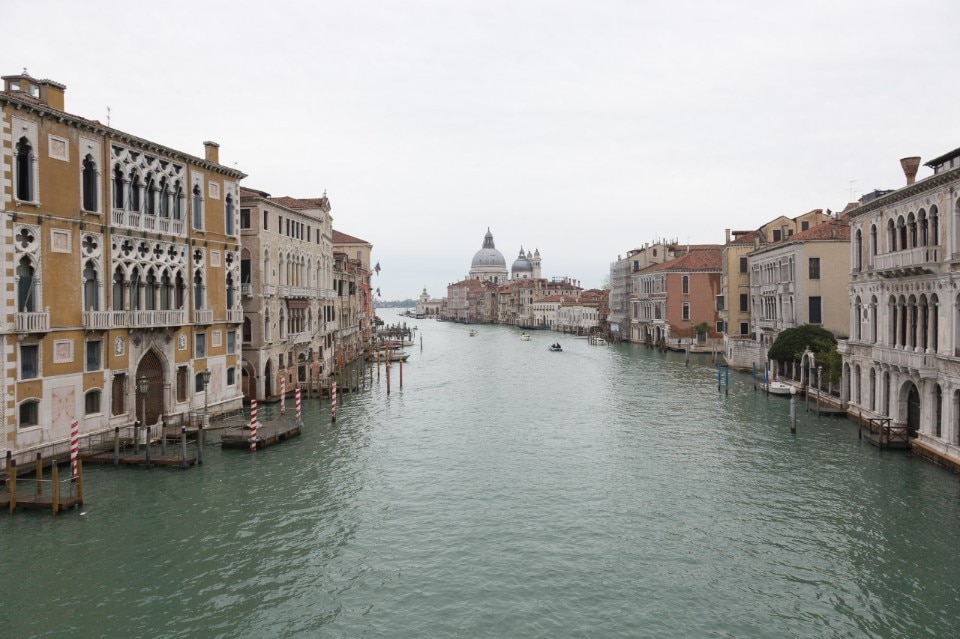
Lagoon as the Louvre
These three basins should be addressed separately from each other because they have different characteristics. I was on the board of directors of the Louvre for many years, a museum system that should have remained a conceptual unit. Each section, however, has its own specificity: for example, where there are the gold plates, you have to adjust the humidity very strictly otherwise the wood will move; in the department where there are the drawings, you have to adjust the brightness with the same severity or the light will burn the graphic part of the drawings; and so on. Where there is the Mona Lisa or where there is the Nike of Samothrace you have to make very large spaces for reasons of visitor attendance. So an intelligent water management project would have to consider the specificities of the basins to enhance them.
Tre mouths, three problems
Facing the three port inlets with the same project was an extraordinary and risky choice of economic convenience – at least at the beginning, before the cost of the work tripled – because it started with only one project and one construction site. A starting point of this kind is in a certain sense guilty. The central mouth of the port of Malamocco, whose great depth allows passage for large ships, and the port mouth of San Nicolò di Lido, which serves the lagoon basin of Venice, cannot be treated in the same way.
This last port mouth, in 1700, during the end of the Republic, had a seabed of 2.80 meters. Here, the larger ships had to wait for the tide to enter, to have those 50 centimeters more that allowed them to pass this step. Now it is at a depth of 14 meters, so you understand that history itself has changed the physical reality and will continue to change it both because it will continue the subsidence of the soil and because it will continue the rise of the sea. So, multiplying the problem by three, making the plans for the three port inlets equal when they are three different problems is already – in my opinion – an extraordinary conceptual error.
Venice could have been, as if to say, the reference point in the world on the problem of global warming, a beacon and knowledge of true experimentation.
An experimental work
With MoSE, then, there are still many technical problems: a person responsible for the realization of this project wrote yesterday in the newspapers (reported to November 13, 2019, ed.) responding to those who asked why the bulkheads of MoSE had not been raised "because it is an experimental project and we are not yet able to do the tests". So after spending an amount that is equal to three times the cost of the MoSE, to say that it is an experimental work and that we still do not know how it works, seems to me a rather serious thing. The experiments must be done in the laboratories: this experimentation has cost, now they say, 7-8 billion euros, not counting the cost of all the collateral works made to prepare for the advent of that work – and it easily reaches 12/13 billion – as well as the embankments and piling of the Lagoon that the currents and water have already completely destroyed before the work came into operation. So how do you live this situation? Badly. It is useless to make big speeches, badly.
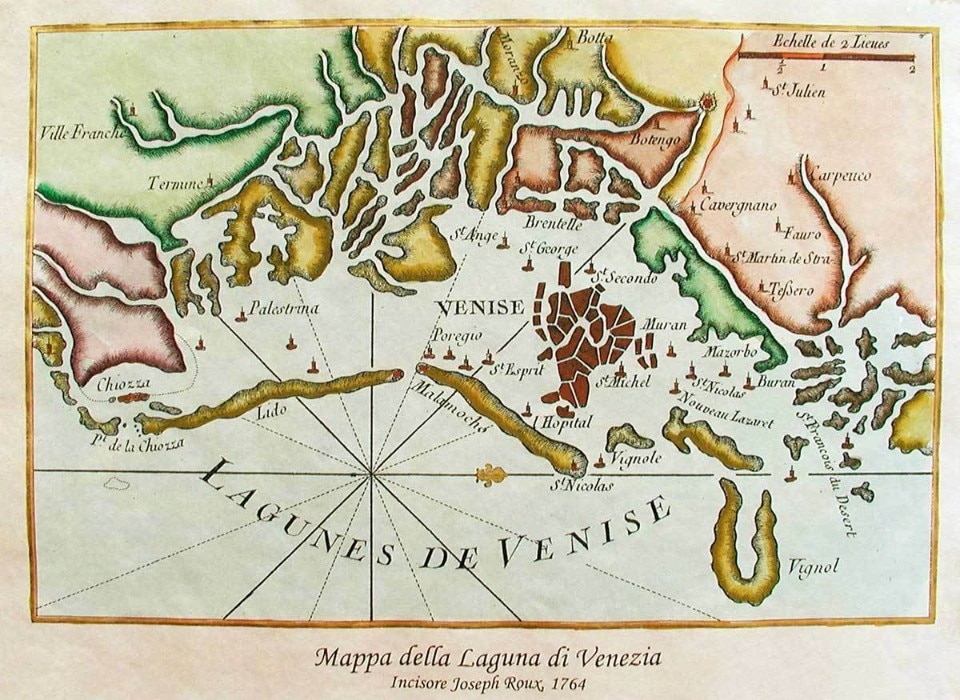
The Water Magistrate
What is heavier still is the destruction of knowledge, the moral destruction that has created such a long story, 30-40 years, in a relatively small territory like Veneto. It has involved almost all professional classes: there is no longer, in all the interventions that there have been in recent days, a plumbing engineer or a public works manager who has spoken. The crisis of the MoSE has dragged that institution that was called Water Magistrate, which for five centuries had regulated these problems, into destruction. The mayor of Venice, for example, has no jurisdiction over certain parts of the lagoon, not even the Doge had it. In 2014 they also eliminated the body of the Water Magistrate after discovering that it was deeply corrupt.
Leonardo da Vinci
The Water Magistracy was a tradition, here they invented modern hydraulics. To preserve the lagoon Venetians have moved rivers, today in the city is difficult to redo a sidewalk. In Rome they are struggling to pave the streets with potholes. These Venetians without engines or tractors have moved the Piave, Sile, Brenta and Adige rivers from their bed. So nature can be intelligently shaped to achieve the goals you want to achieve, but you need to have skills. At that time, we are talking about 500 years ago, Leonardo da Vinci was also coming. The Dutch learned these things from the Venetians: if you destroy skills, in the end you are necessarily at the mercy of the waves.
Forbidden to talk about hydraulics: Vinciana school vs. Veneto school
Alternative projects to MoSE? There are none. Everyone can have his idea and I have mine. In ancient times it was forbidden – I still speak of the Republic of Venice – to talk about hydraulics. It is a very complex subject, and lagoon hydraulics is much more complex than that of rivers. Nobody has succeeded in realizing a mathematical model to describe how the waters move in the lagoon. So really the ancient practice was to have a great experience and to proceed step by step, to see how things behave. It's an empirical science: that's why you can't find a specialist who comes from London: Leonardo da Vinci (who was not a fool) after a month who was here said "I don't understand this one" and, since then, in modern science the two schools of hydraulics have separated: the Vinciana school and the Veneto school. The Venetian school is not, in reality, a real school, it is a knowledge fruit of a specific and empirical knowledge, of a praxis.
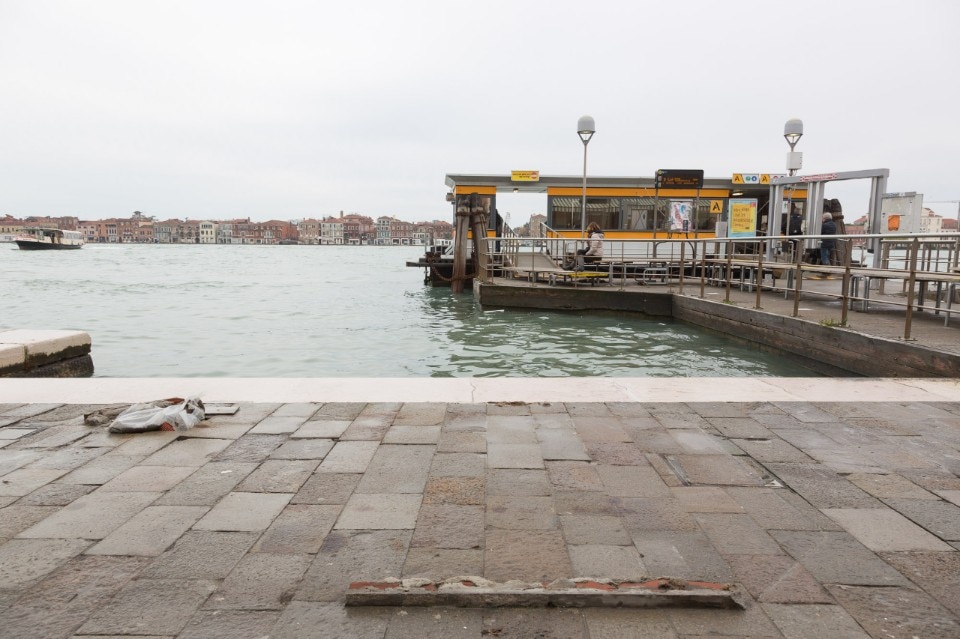
Water, little boats and water
They were deposited knowledge. Over the years I travelled the Laguna by boat, with a surveyor who knew it like I know the pockets of my jacket. Now for the people it is just water on which, with a little boat, you take a ride: this is the Laguna today. The physical notion of what we are talking about has been lost. When I was a kid I used to go and get 'caprozzoli' – that's what we called clams – in a certain part of the lagoon you could walk with water up to your knee. Now they are six meters deep there. You think that inside the lagoon there is the deepest point of the Adriatic. Going back to the farmer and the surveyor, they are heirs to a centuries-old culture that has nothing academic or formalist about it, but it is full of knowledge. The surveyor with whom I travelled around the lagoon knew everything, and I never found a hydraulic engineer who knew as much as he did. Now students of architecture spend five years in the faculty of architecture but they don't even go to visit architecture. There is also a separation in training, experience is excluded. On some things you can only be experimental, in short. If you want to learn how to go sailing you do not study at the table, you have to go, take the wind blow, understand how to do it.
Netherlands vs. Venice
On the edge of the lagoon there are strong embankments that protect, for example, the Riviera del Brenta, made by the Republic in the Sixteenth century to prevent flooding of the mainland in the lagoon, but which completely protect the mainland from any flooding of salt water. There are 40,000 hectares of Veneto that are below sea level, which are protected by embankments, waterways, like half of The Netherlands. The latter already has a perfect plan, has already decided which land to abandon to the sea, is already raising the dams of those it wants to defend. Here instead there is nothing. I still say, and then I think I have said everything, and too much and more, that Venice could have been, how to say, the reference in the world on the problem of global warming, be a beacon and knowledge of real experiments. We should have been the center of this research and the emblem of solutions, as in past centuries. And instead this consciousness is no longer there. It should be noted that in the public works of the immediate post-war period we were the best in the world, we were the ones who made the most important dams, highways or bridges around the globe. Now there don't seem to be any more rumors, or maybe there aren't even the skills anymore. Or that those who have those skills no longer even have the pride to boast about them.
The underwater mechanical and electromechanical engineering work
Let's go back one more step, on the project setting: a mechanical and electromechanical work underwater is an extravagance that nobody in the world has ever thought of before. It was made by giving in to a certain suggestion that one should not see works so as not to disturb the landscape. So the idea that this work folds and goes underwater would imply that the landscape made of artichokes in our estuary is not disturbed? The excavations that have been made on the bottom of the lagoon to put these caissons on which the floodgates are anchored are an intervention that affects the same geological structure of the bottom of the lagoon. Of course you can't see it, but what kind of environmentalism is the one who is never content not to see one work, when the other one is devastating because it is underwater? A series of misunderstandings and a series of shortcomings. I would put among the defendants all the mayors of Venice who have succeeded one another. They did not interpret a thought such as the one I say, elaborating it more. They have also found themselves tinkering with this river of money, with this high tide of money that has overwhelmed everyone. If you wanted something severe, I said it.
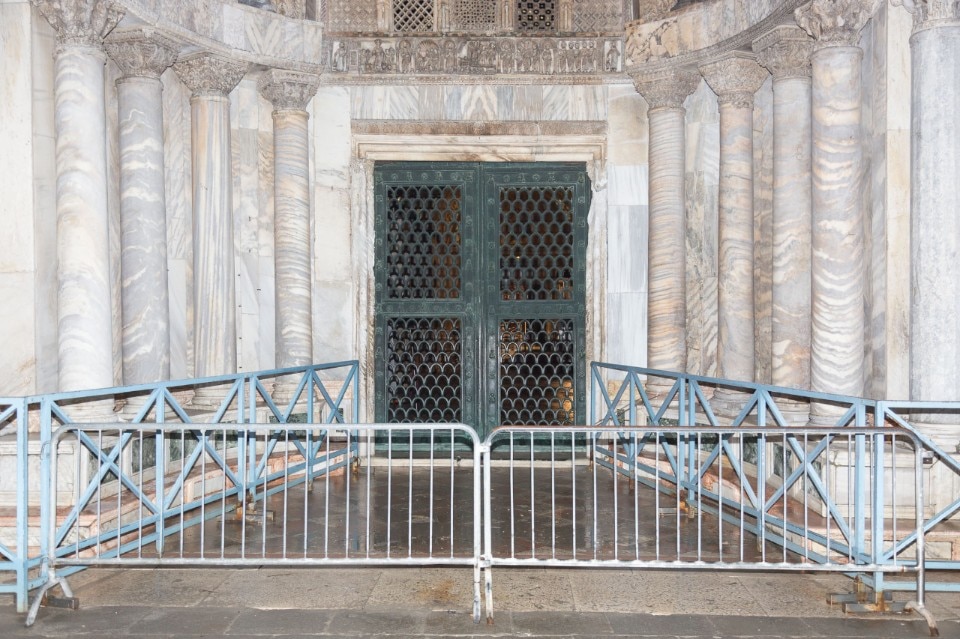
The Thames and the Tsunami
On the Thames they have made with hinges two huge hatches: when the water arrives, pressing, it closes them, and when the water goes down they open again: the end. I have been in the underground and underwater tunnels of the MoSE. Nobody had ever done mobile hydraulic works in the sea before. Underwater motors do not exist because the water is corrosive, because down there it fills up with mussels, sand, shells. And above all, when the hatches are hit by the waves they begin to move: they are 40 meters high, the distance between them is 6 centimeters. A millimeter of movement is enough for a disaster to happen: we will no longer have high water, but the Tsunami. The high water, yes, is dramatic, but it rises. But if a two-meter wave comes, it's over.
A moral void
The MoSE crisis has created a fearful moral, intellectual or professional vacuum. It has dragged an entire generation into the whirlpool. I will be very ready to intervene again on these issues when there is a table or an interlocutor to talk to: there is no table, no interlocutor. I repeat, put this case of the MoSE, if you do journalism, along with that of the Ilva of Taranto, along with that of Alitalia and that of FIAT, and you see within 30 years of this last passage, Italy is moving out of the sphere of countries that have a certain intellectual and moral, as well as financial, weight. They are all homogeneous crises, crises that represent a collapse of a ruling class. Then we are all involved. Or, at least, someone like me is certainly involved by the physicality of the problem because I am immersed in water, but also by the drama of the moral, cultural and political issue.
The moon in syzygy
It is necessary to keep up the debate to find solutions because the problem of rising sea will continue as well as the problem of tides, especially when the Moon is in 'syzygy'. For this reason the high water always arrives in November: the Moon rotates around the Earth with an elliptical path. So at a certain moment it is very far from the Earth, then, when it is at the narrow part, it is near. The tide is the result of the lunar attraction: the Moon 'pulls' the Earth and the water follows the Moon. So much so that the tide cycle is 28 days, like that of the Moon. So ritually happens every year in November: it is enough that the attraction of water made by the Moon is added to the thrust of the wind and other meteorological facts. For this reason we do not say high tide but high water, because it is the result of different components, it is the effect of a sum of input.

Countless civilizations have disappeared
The pathetic aspect of the matter, in a painful sense, is that if infinite civilizations have disappeared, and this can also disappear. The impressive thing is that there doesn't seem to be a place where this issue is put on the table and people, responsibly, make decisions: if you are on a plane and there is no pilot, it changes a bit the whole mood of the person on that plane. So, let's use the extraordinary suggestion, the beauty of Venice – you see, the whole world takes care of it –but let's not use it only from a tourist point of view, let's also use it as a lever to develop knowledge and theories.
A dazzling old lady
I don't do the Venetian, I don't have 'Venetian' nostalgia. For me Venetians are the ones who love Venice, whether they are French or Chinese. I'm very lonely, I'm here on Saturdays and Sundays, but the place is beautiful, very pleasant: you can go out in Campo Santo Stefano, you can sit wherever you want, take a Spritz: everything is beautiful. Venice is a historical uniqueness, an extraordinary historical richness that is almost an unexplored encyclopedia. Each of the Venetian families embarked in Damascus, the other in Samarkand, one had the agreement with the caravanners: there was really a cosmopolitanism. So much so, it seems to me, that this crowding of different people in Venice is still a metaphor for Venetian cosmopolitanism, and I am so solitary that I don't mind at all not knowing anyone. Visitors or new inhabitants from abroad will continue to come to Venice as long as there is. The fact that they will disappear is something that increases their attractiveness. A gentleman who came from China told me that there are 98 million people applying for a passport with the motivation to visit Venice. They do not know what Frankfurt, Düsseldorf, Marseille or Belgrade is, but they know what Venice is. And so this old lady, dazzling with beauty and debilitated with strength, is very suggestive. I also like this aspect of her inexhaustible femininity.
. . . . . . . . . . . . .
A message for our younger readers?
You have to do the things you do well, you have to do them really well. And look around, don't look inside yourselves.
We thank you very much and let's hope (speriamo)...
Speriamo. Once I was with Le Corbusier and I said "well, let's hope". He told me "No, because hoping in Spanish means waiting". That's just like Le Corbusier was: he was younger than me in saying a sentence like that. A phrase of great youth, of great joy of life. He died two months later, swimming: I wrote "he went swimming toward the horizon", he knew that he had perhaps Alzheimer's disease. He wanted to disappear. As a man who had always been so rational, he did not want to die with mourning, with feelings. He liked it more like the Virgin Mary: Assumption into Heaven. On that day he disappeared, we never heard from him again. He went to this den of his that was on the Côte d'Azur and went swimming. The merciless sea returned him and two months earlier he said he didn't want to hope because in Spanish it means waiting.
For me this conversation was a chance to speak, because these days I have not spoken. Water came in through the windows, being a low house, on the ground floor. It is a bit of a violation, a scar.
Social sharing image: trailer of Homus Urbanus Venetianus by Bêka & Lemoine, 2019


